Astrophotos of the week: the Lobster Nebula, a huge Supernova, the SpaceX’s launch and more!
8th Dec 2023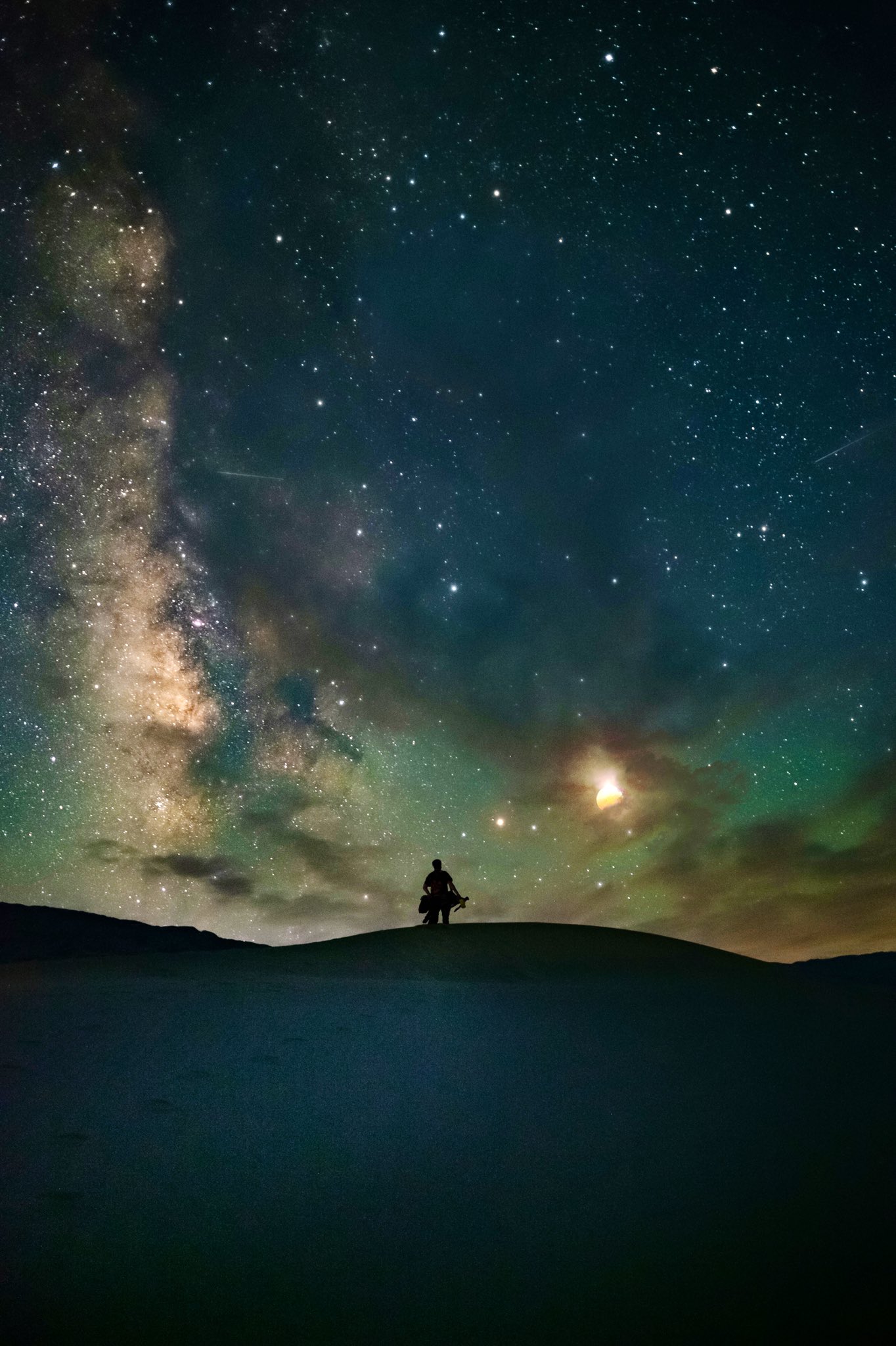
In ever-expanding space, where galaxies twirl and nebulae ignite, and a celestial gallery unfolds, showcasing the breathtaking artistry of the universe. Join us as we turn the pages of the cosmic storybook, where each image is a chapter, and the universe is the author. Welcome to our next “Astrophotos of the Week“, as we gathered the best images of amateur astrophotographers from social media!
The Lobster Nebula by Jan Scheers via Sara Hunt
This week’s article we start with Sara Hunt who shared a captivating photo of NGC 6357, the Lobster Nebula, taken by Jan Scheers. Given the stunning nature of this nebula, it’s likely to be a visually striking image! It showcasts the intricate details of the nebula’s structure and the surrounding star-forming regions.
The Lobster Nebula is a vast and complex emission nebula located in the constellation Scorpius. This nebula is situated in the Sagittarius Arm of the Milky Way, at a distance of around 8,000 light-years from Earth. Its name comes from the shape of its central part, which is said to resemble a lobster’s claw.
The Lobster Nebula’s complex structure, vibrant colors, and the ongoing process of star formation make it an excellent target for astrophotography!
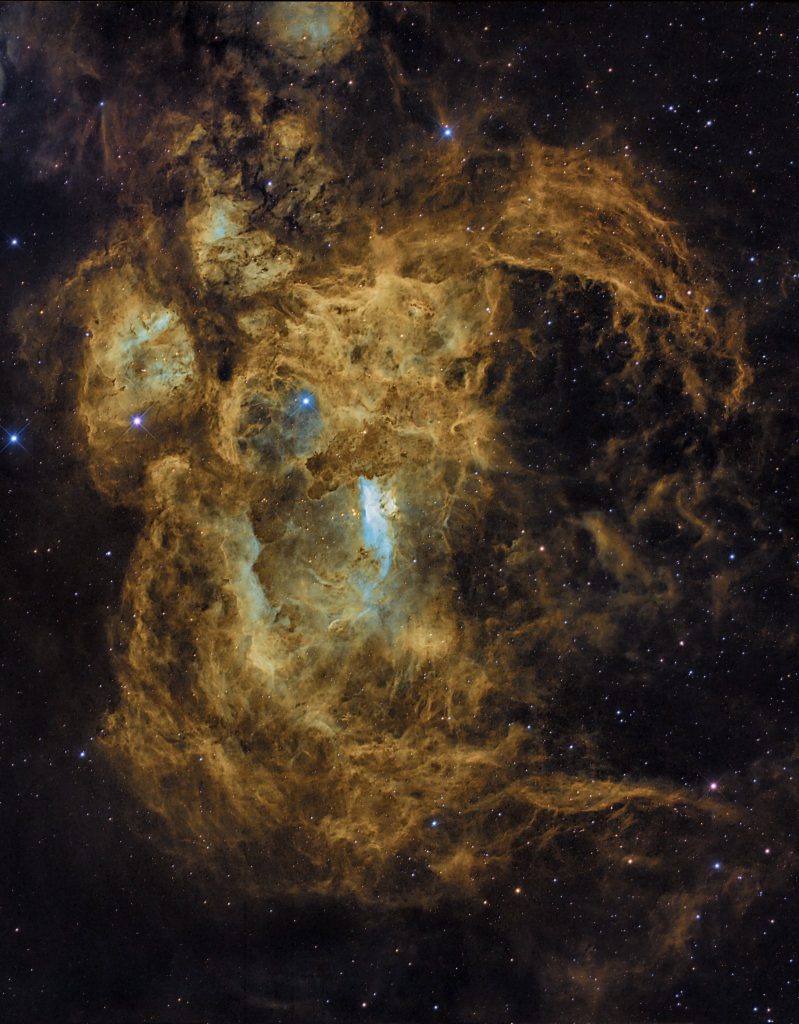
Image credit: Sara Hunt
The Great Orion Nebula by “Astrophotography by Mario”
Mario, under the handle @astrophoto_mjw, shared a captivating image of the Great Orion Nebula along with some insightful information. “The Great Orion Nebula, photographed here, is producing stars at a ferocious rate. Over 180 still-forming solar systems, which we know as proplyds, have been found in this nebula alone, and by far the most ever found in a single nebula”, he wrote.
We can only add that The Great Orion Nebula is one of the brightest and most well-known nebulae in the night sky. It is located in the Orion constellation and is visible to the naked eye. M42 is a region of intense star formation, and as Mario mentioned, it’s producing stars at a high rate. The proplyds (protoplanetary disks) are areas where new solar systems are in the process of forming. It’s a captivating thought that somewhere within the Great Orion Nebula, there may be young planets, moons, and other celestial bodies taking shape!
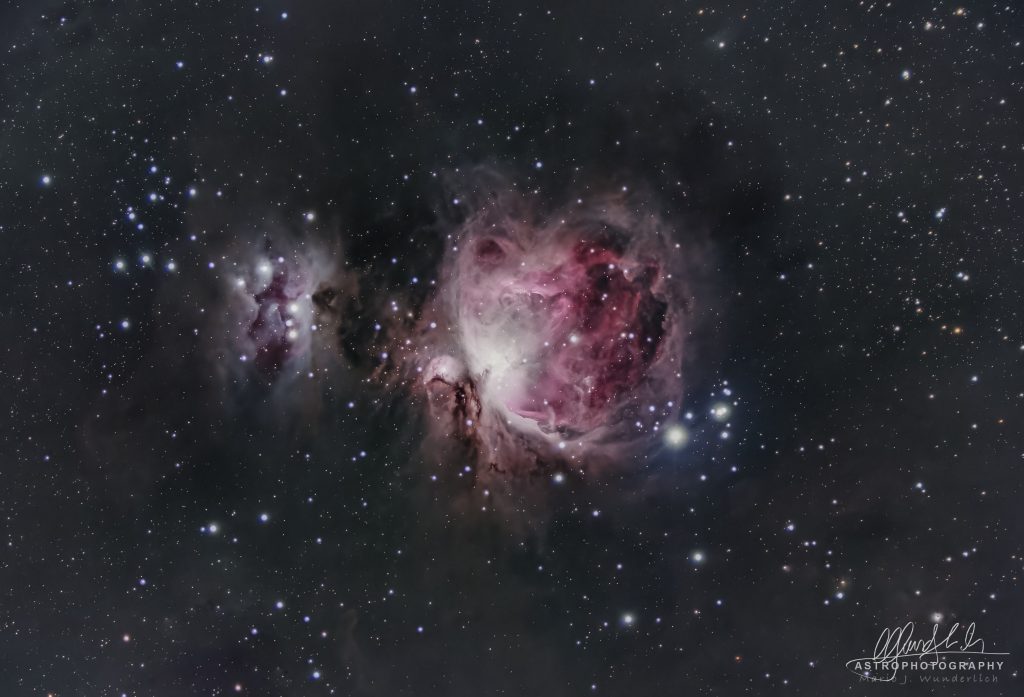
Image credit: Astrophotography by Mario
An inspiring space explorer’s portrait by Ian Lauer Astro
Ian Lauer Astro shared a powerful and inspiring message along with a stunning image. “I want to inspire 1 million people to get under a sky full of stars”, he wrote. Ian’s dedication to inspiring people to connect with the beauty of the night sky is admirable. The image of a person staring at the stars while holding a telescope adds a personal and relatable touch to his message.
Thus, the sentiment Ian Lauer expresses resonates with the idea that pursuing one’s passion and inspiring others often requires determination and a focus on the journey. Encouraging people to experience the awe of a star-filled sky and fostering a sense of wonder about the cosmos is a wonderful goal.
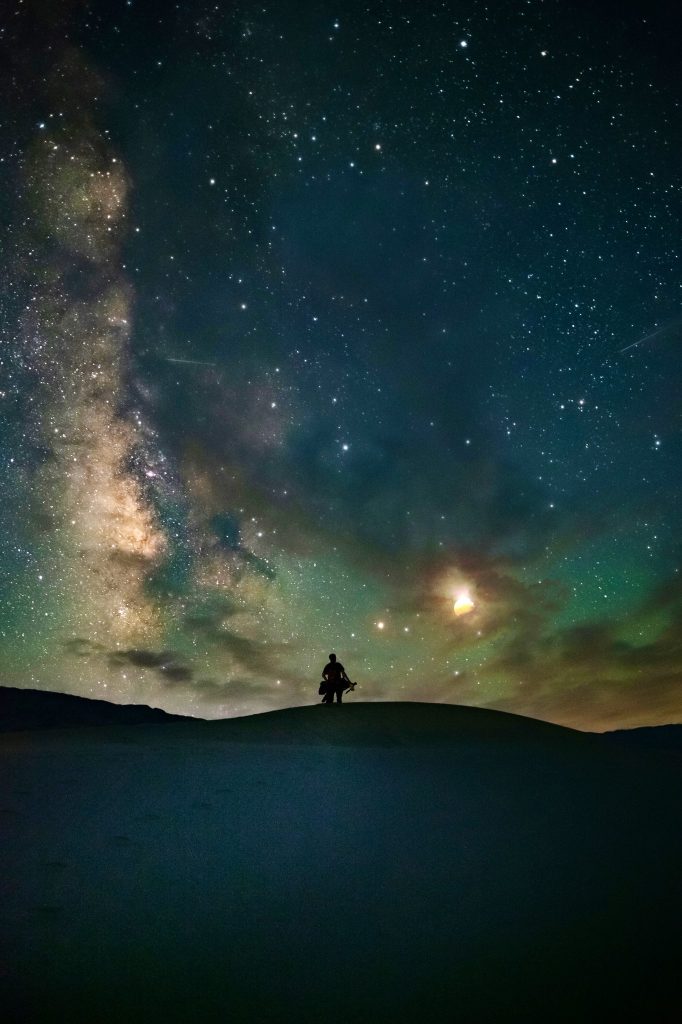
Image credit: Ian Lauer Astro
The largest supernova discovered by Bray Falls and colleagues?
“We discovered the largest known supernova to ever be found by amateur astronomers, this is the Nereides Supernova Remnant”, wrote Bray Falls about his image. “The final image produced was an international collaboration with my friends Marcel Drechsler in Germany, and Yann Sainty + Nicolas Martino + Richard Galli in France. However, the science aspect is still undergoing, and lead by Rob Fesen at Dartmouth”.
Actually, if Bray Falls and fellow amateur astronomers have indeed discovered the Nereides Supernova Remnant, that’s a remarkable achievement. Amateur astronomers contribute significantly to the field of astronomy, often making noteworthy discoveries and observations. Nevertheless, the Nereides Supernova Remnant with blue gas and red hues looks absolutely stunning!
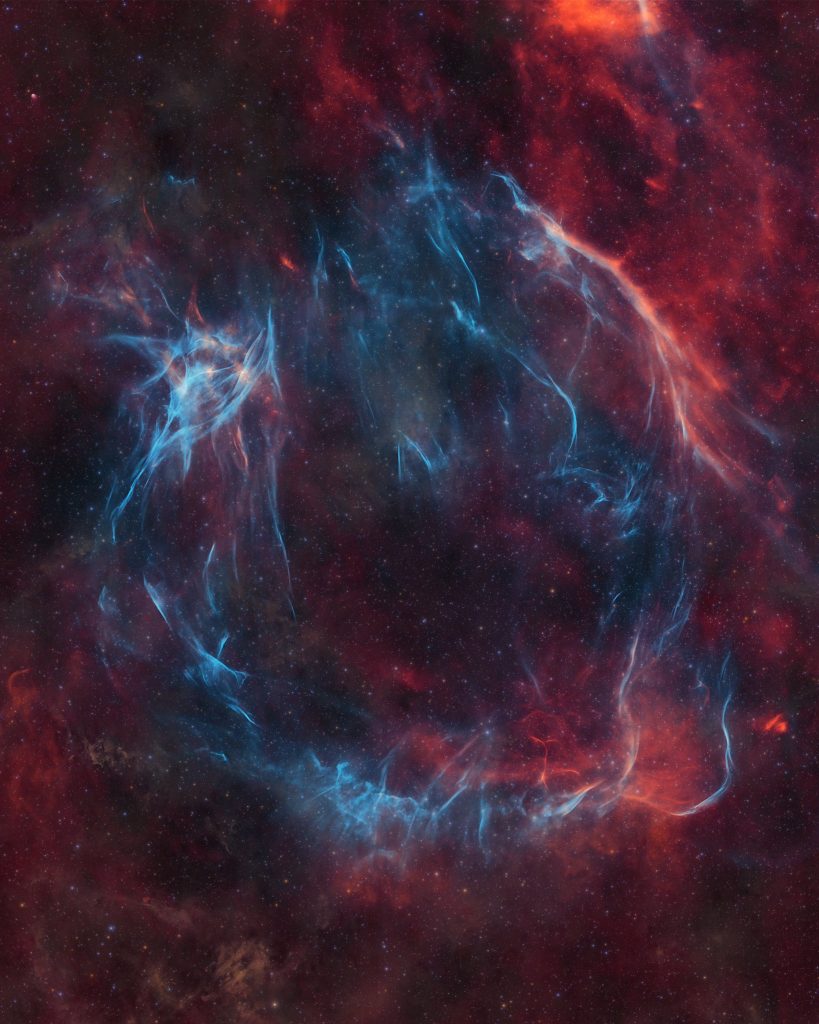
Image credit: Bray Falls
Andrew McCarthy’s detailed Sun
Andrew McCarthy’s ability to photograph the sun’s chromosphere from his backyard is an impressive feat. The solar chromosphere is a layer of the Sun’s atmosphere located just above the photosphere and below the solar transition region. It’s a region known for its dynamic and fascinating structures, including prominences, spicules, and filaments.
Advancements in technology have made it possible for amateur astronomers to engage in solar observation and photography. Specialized solar filters and dedicated solar telescopes allow enthusiasts to safely explore and capture the intricate details of the sun. And how unbelievably beautiful and detailed the result is!
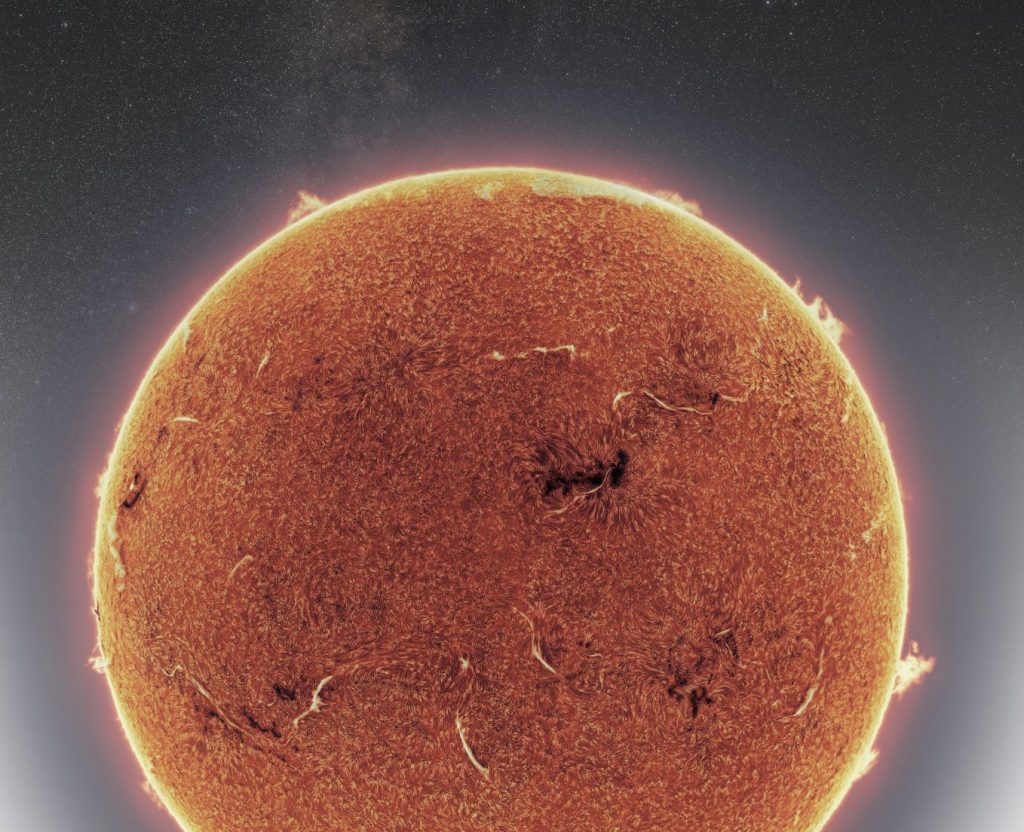
Image credit: Andrew McCarthy
SpaceX’s launch caught by Jenny Hautmann
Jenny Hautmann’s image of the SpaceX launch she captured looks intriguing. Launching Starlink satellites and witnessing the Falcon 9 rocket’s journey through the night sky is a truly spectacular event. A long ray from the rocket’s launch cutting through the night sky above the trees and clouds suggests that the photograph captured a striking visual moment. The image likely showcases the illuminated trail left by the Falcon 9 as it ascended into space. It’s worth noting that SpaceX launches are often visually captivating. And photographers like Jenny Hautmann play a crucial role in capturing and sharing these moments with the public!
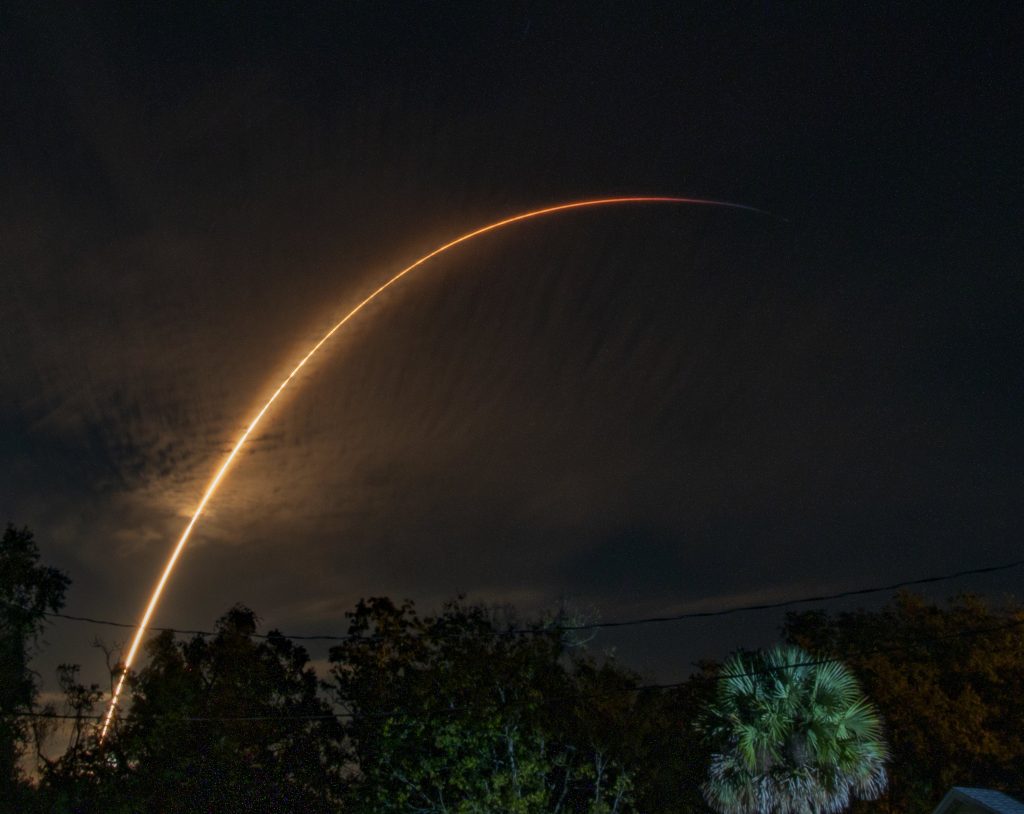
Image credit: Jenny Hautmann
E. G. Ramón’s RCW 120 star-forming region
The description provided by Ramón E.G. refers to a color-composite image of the RCW 120 star-forming region.The photographer mentions an “expanding bubble of ionized gas” with a diameter of approximately ten light-years. Such bubbles are common in star-forming regions and result from the intense radiation from young stars. These stars ionize the surrounding gas, creating bubble and arc structures.
While it’s a real astrophysical phenomenon captured in the image, the inherent beauty and otherworldly nature of such astronomical scenes often evoke a sense of wonder and imagination! This photograph looks just like a painting by a talented artist from a fairytale book!
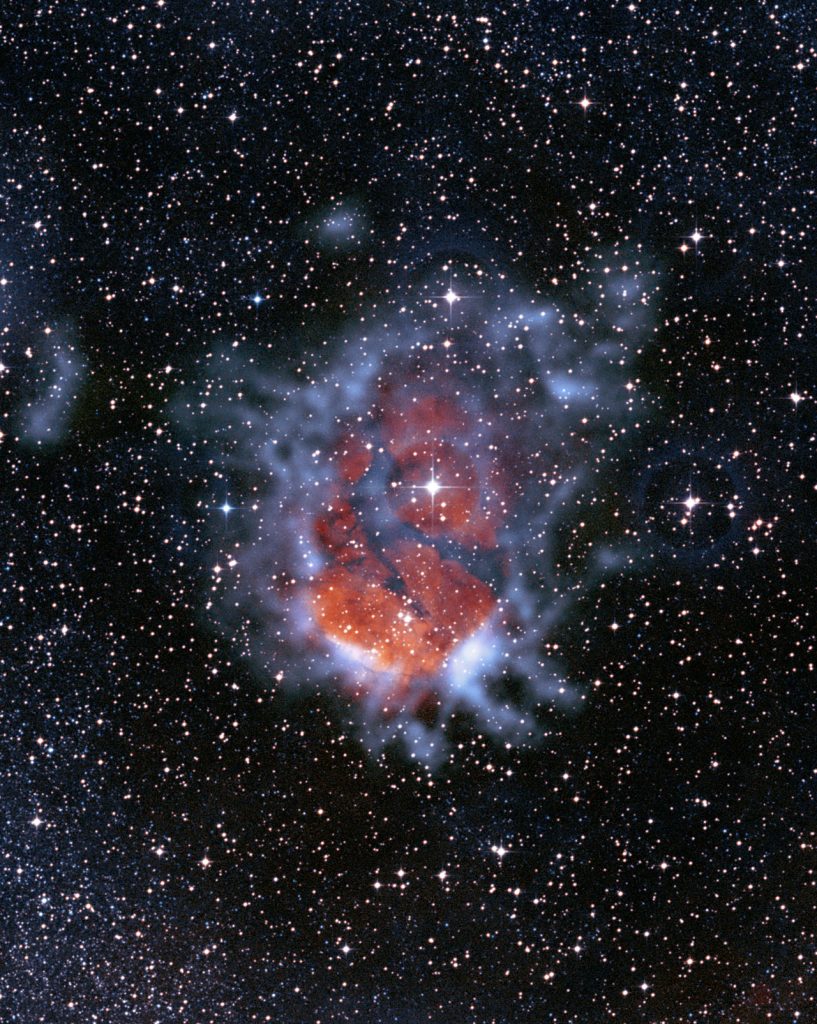
Image credit: Ramon E. G.
So, join us again next week as we embark on a fresh journey through the space!






Thank you for your comment! It will be visible on the site after moderation.